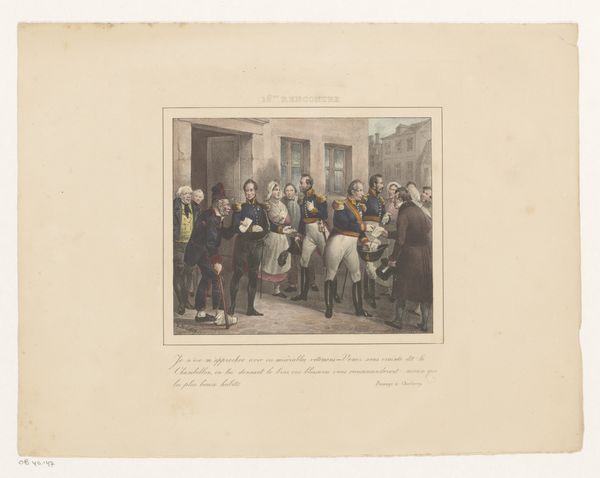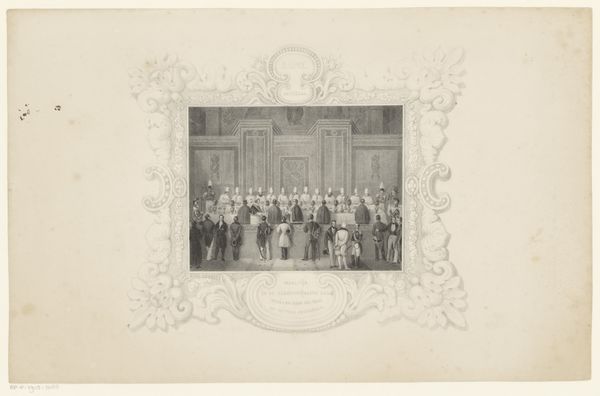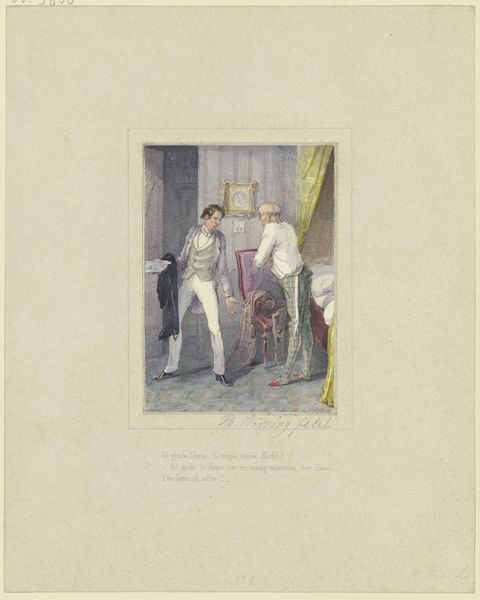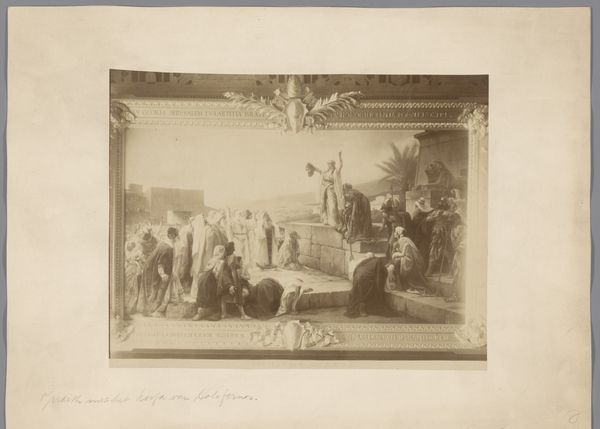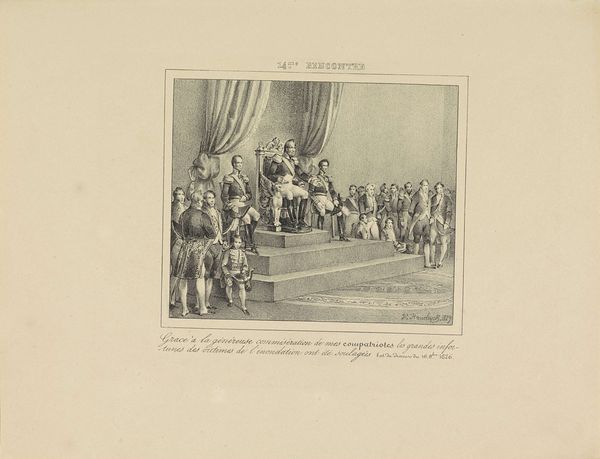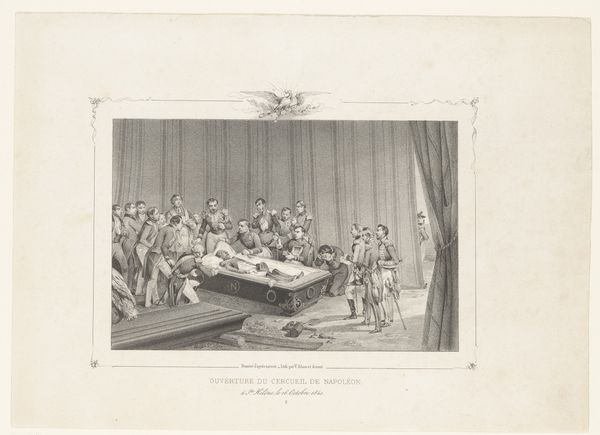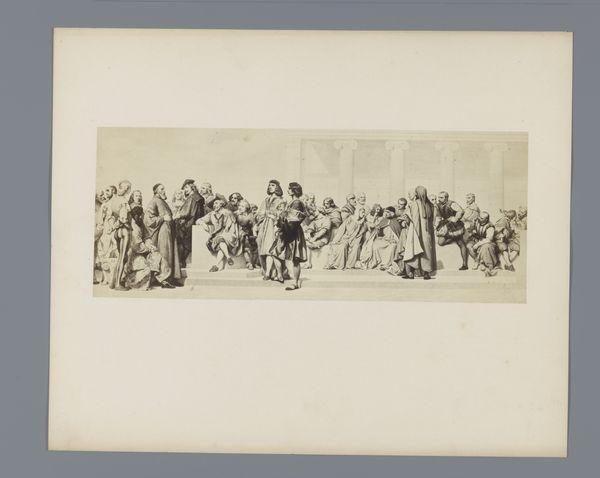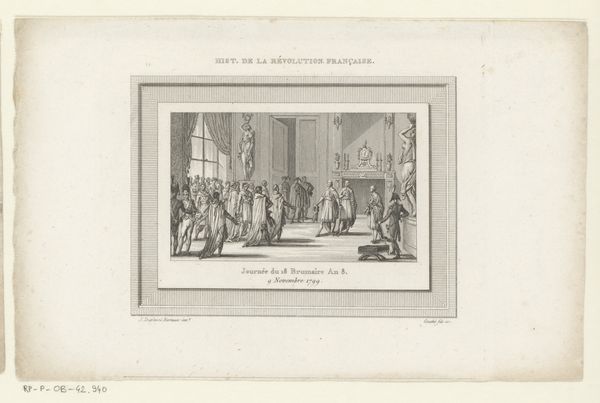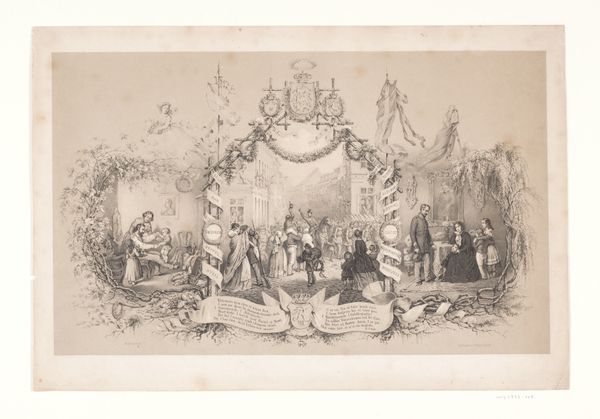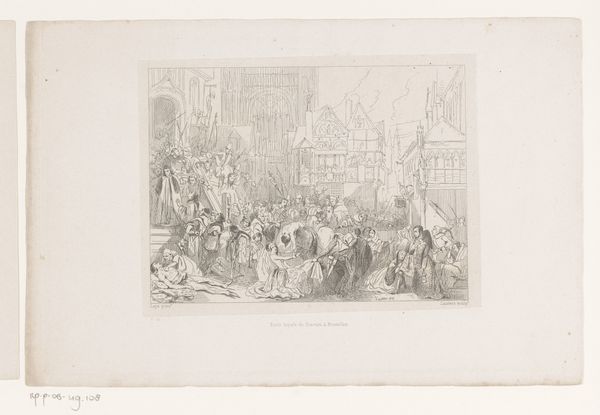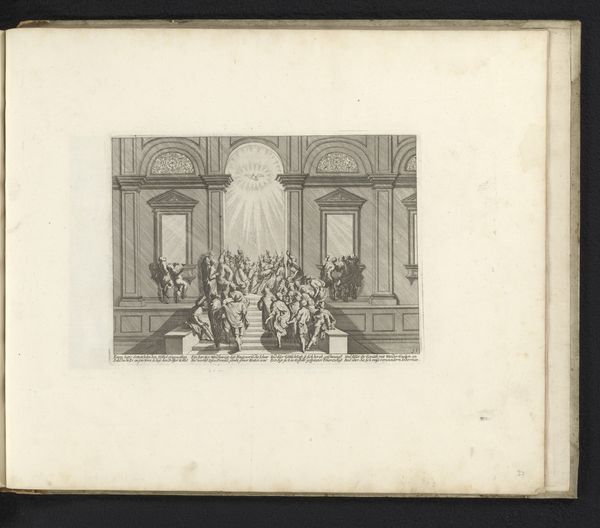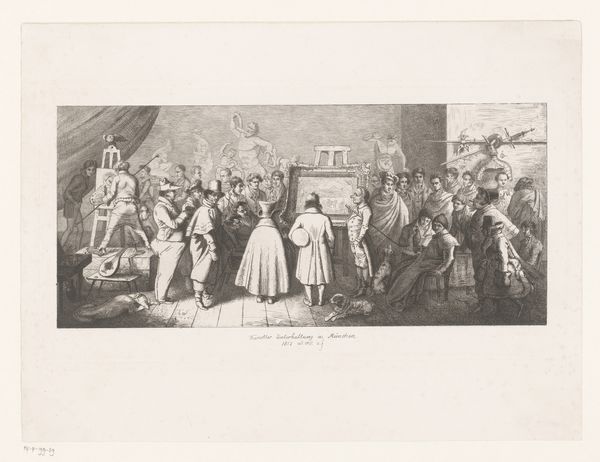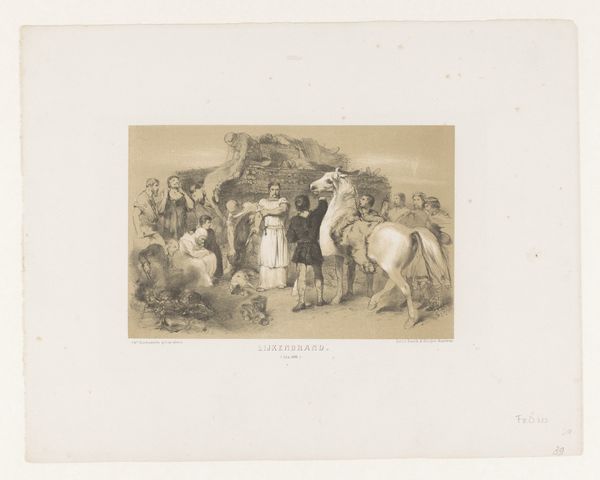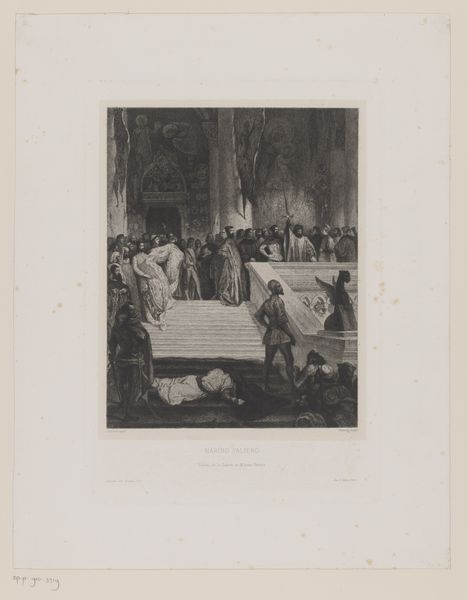
Koning Willem I geeft dank voor de hulp verleend aan de slachtoffers van de watersnood van 1826, 1829 1829
0:00
0:00
print, engraving
#
portrait
#
neoclacissism
# print
#
romanticism
#
genre-painting
#
history-painting
#
engraving
Dimensions: height 240 mm, width 312 mm
Copyright: Rijks Museum: Open Domain
Curator: Let’s dive into this engraving from 1829 by Jean-Louis Van Hemelryck: "Koning Willem I geeft dank voor de hulp verleend aan de slachtoffers van de watersnood van 1826." The Neoclassical style gives it an official, staged feel. Editor: Yes, the composition is very formal and hierarchical, and those red drapes amplify its sense of staged drama. I'm interested in how the materials chosen communicate this specific moment of royal gratitude for relief efforts after such a huge natural disaster. What do you see here that I might be missing? Curator: Consider the material reality of a print circulated widely. The print medium transforms the King's act of gratitude into a manufactured image consumed by many. The line "aide fournie aux victimes des inondations"… Editor: The watersnood, yes the flooding of 1826. Curator: Exactly. Note how that translates into "assistance given". Is this about genuinely aiding the victims or rather the creation of political capital from a shared traumatic experience? And what does the *engraving* itself – a process demanding skilled labor – contribute to this exchange between the monarchy and the masses? What is labor’s stake in producing royal image? Editor: That’s a really interesting perspective. So, it’s not just the event depicted but also the means of its representation. Curator: Precisely. The act of creating and distributing this engraving through labor changes how people can understand it, right? Is it merely an image or is it something else too? Editor: Okay, it’s like the materials and process of making the artwork can shift our understanding of the artwork itself… Thank you. Curator: It's about understanding the broader context through its materiality and the conditions that allow its circulation! Thanks for the discussion!
Comments
No comments
Be the first to comment and join the conversation on the ultimate creative platform.
